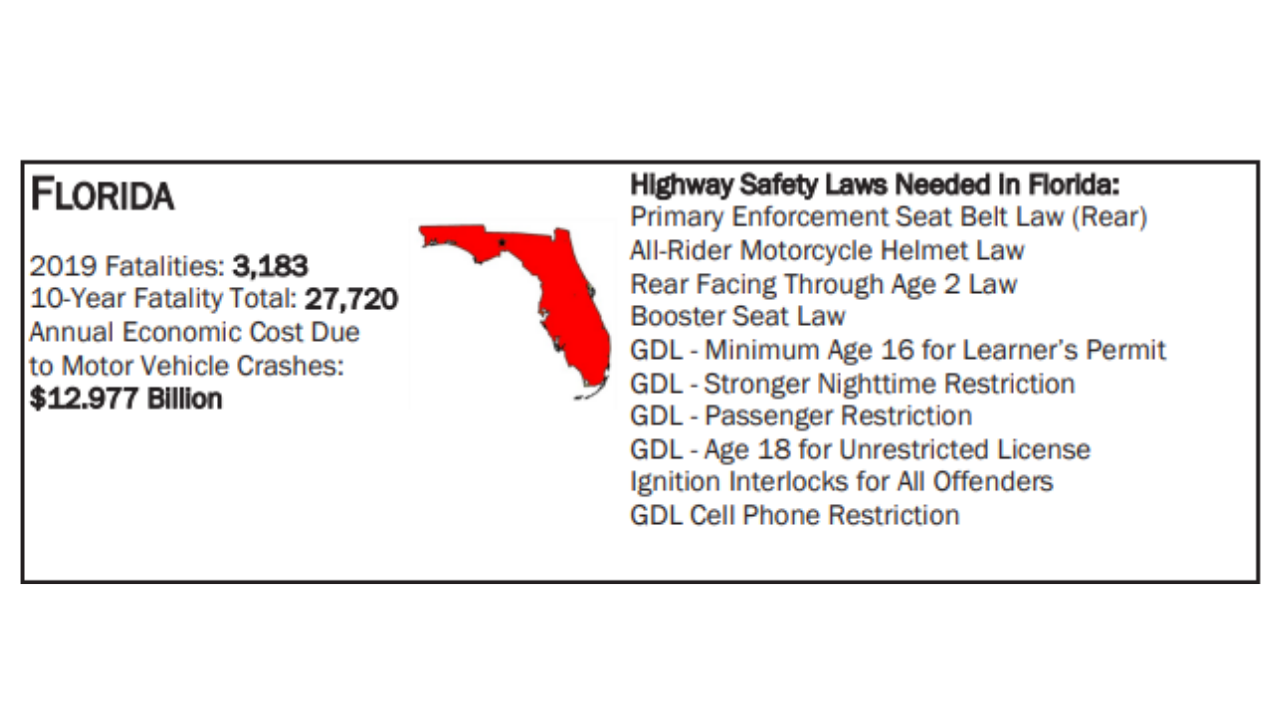TAMPA, Fla. — Florida may be an ideal state to live in, but according to the organization Advocates for Auto and Highway Safety the state ranks low when it comes to driving safety laws.
The annual report compared the safety laws in each state and the District of Columbia. It rates on a color scale of green, yellow, and red.
2022 Roadmap of State Highw... by ABC Action News
Green represents a state in good standing and the report said the state is significantly advanced toward adopting all of the advocates' recommended laws.
Yellow represents a state that should use caution and said the state needs improvement because of gaps in the advocates' recommended optimal laws.
Red is the dangerous level. According to the organization, a state with this mark falls dangerously behind in the adoption of the advocates' recommended optimal laws.
Florida ranked in the red.

According to the group, states must have 11 to 16 of the recommended laws in place to rank green. Florida had six.
Among the failed report card of laws that were recommended for change included seat belts. Currently, in Florida, seat belts are only required for front-seat passengers and children. The group recommended that be changed to all people in the vehicle.
The state received another negative mark when it came to mandatory helmets for motorcyclists. Currently, the state does not require a helmet for drivers or passengers.
The group would also like to see changes to age requirements for driver's permits and licenses.
In Florida, a teenager can obtain a driver's permit at 15-years-old and a driver's license at 16-years-old. The group recommended the minimum age to receive a permit to be 16-years-old and a minimum of 18-years-old to get a driver's license.
When it comes to children in car seats the report said the state is missing a law that needs more specifics on where children face when seated. The group would like to see a requirement that kids rear face through the age of two.
The organization said the lack of laws is leading to crashes that cost Florida close to $300 billion a year.
To read the entire study click here.




